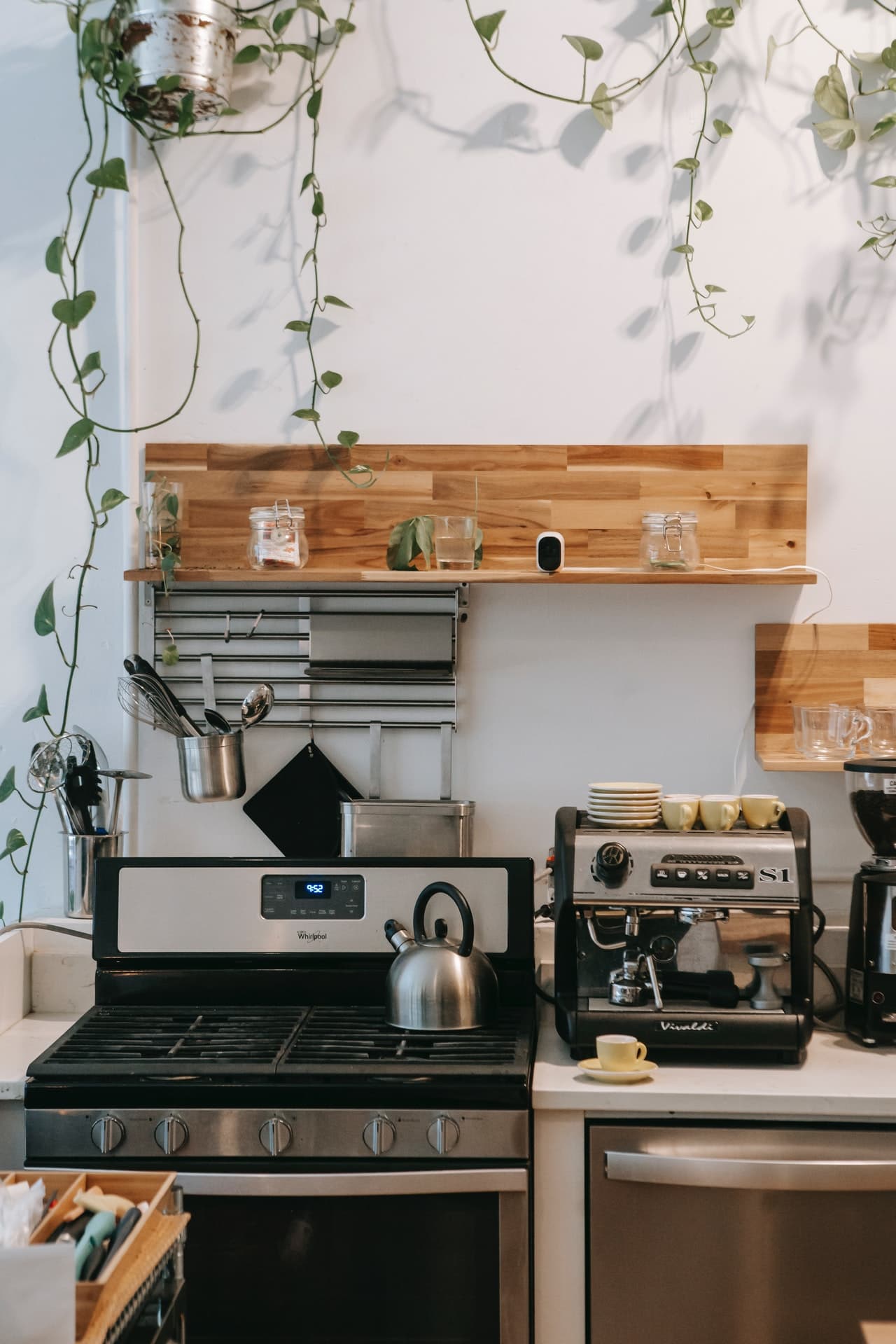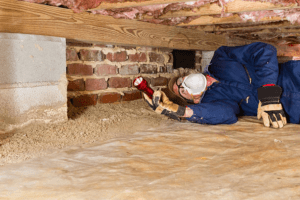The kitchen is often the heart of the home. It’s where we cook meals, share laughs with family and friends, and sometimes even do our homework. Like any other area of the home, it needs to be cleaned on a regular basis.
Cleaning cooking appliances is an important task that you should not ignore. Not only will it keep them functioning properly, but it will also help to keep your kitchen looking clean and tidy. In this article, we will provide a step-by-step guide on how to clean different types of kitchen appliances.
Each cooking appliance has a special and distinct method of cleaning. We’ll highlight some below:
Table of Contents
Cleaning the Oven:
Cleaning an oven is a difficult task that most people try to avoid, but it doesn’t have to be! Here are some tips for making this chore easier on yourself. Cleaning your oven regularly can help keep food from sticking or burning onto its surface. The best way to do this is by using a self-cleaning oven cycle if your oven has one. If not, you can use a commercial oven cleaner or make your own cleaning solution.
To Clean an Oven With a Self-Cleaning Cycle:
If your oven has a self-cleaning cycle, it is best to use that to clean it. The cycle will heat the oven up to a very high temperature, which will burn off any food or dirt that is on the surface. All you have to do is wait for the cycle to finish and then wipe away any leftover ashes or debris.
To Clean an Oven Without a Self-Cleaning Cycle:
If your oven doesn’t have a self-cleaning cycle, you can use a commercial oven cleaner or make your own cleaning solution. To use a commercial oven cleaner, follow the instructions on the bottle. If you want to make your own cleaning solution, mix together baking soda and water in a spray bottle. Then, spray the solution onto the dirty surface and let it sit for a few minutes. Next, scrub the surface with a wet sponge and rinse it off with water.
Cleaning the Range:
The range is one of the most commonly used appliances in the kitchen. It can be difficult to clean because there are so many different surfaces that need to be addressed which includes the cooktop, oven, and hood. Cleaning your range will help keep it looking new for years to come! Here are some tips for making this chore easier on yourself.
Cleaning the Cooktop:
Cleaning your cooktop regularly can help keep food from sticking or burning onto its surface. The best way to do this is by using a stove-cleaning pad or a non-stick cooking spray.
Glass Cooktop
Cleaning a glass cooktop surface is easy because there are no holes or crevices where food particles can get stuck. All you have to do is wipe down the surface with soapy water after. If you have a glass cooktop, it’s important to use the correct cleaning products. Cleaners that are not designed for this type of surface can damage them by etching or scratching their surface
Cleaning a Ceramic Cooktop:
If your cooktop is made of ceramic, you will need to use a stove-cleaning pad to clean it. Cleaning pads can be purchased at most grocery or hardware stores. Simply wipe the surface of the cooktop with the cleaning pad after each use and then rinse off any leftover dirt or debris.
Cleaning an Induction Cooktop:
An induction cooktop is one of the most versatile options available because it can be used with a variety of cookware, including cast iron and stainless steel. Cleaning an induction cooktop is easy because there are no coils or burners that need to be addressed. All you have to do is wipe down the surface with soapy water after each use.
Cleaning the Oven Door:
The oven door can be difficult to clean because it is a small and hard-to-reach surface. To make this chore easier on yourself, use a glass cleaner and a microfiber cloth to clean the door.
Cleaning the Oven Racks:
The oven racks can be difficult to clean because they are often greasy and dirty. The best way to clean them is by soaking them in warm soapy water for at least an hour before scrubbing off any leftover dirt or debris. Cleaning the racks will help keep your oven looking new and prevent food from sticking to its surface.
Cleaning the Hood:
The hood can be difficult to clean because there are so many small crevices where food particles can get stuck. Cleaning the hood will help keep your kitchen looking new and prevent grease from building upon its surface.
Cleaning a Stainless Steel Hood:
Cleaning a stainless steel hood is easy because it does not have any crevices that need to be cleaned out by hand. Simply wipe down the surface with a wet sponge and soapy water after each use.
Cleaning an Aluminum Hood:
An aluminum hood can be difficult to clean because it is a porous surface. The best way to clean it is by using a degreaser or ammonia-based cleaner. Simply spray the cleaner onto the dirty surface and let it sit for a few minutes before scrubbing it off with a wet sponge. Rinse the surface with water afterward.
Cleaning the Range Hood Filter:
The range hood filter can be difficult to clean because it is often greasy and dirty. The best way to clean it is by soaking it in warm soapy water for at least an hour before scrubbing off any leftover dirt or debris. Cleaning the filter will help prevent grease from building up on your range hood and keep it looking new for years to come!
Cleaning an Electric Range:
An electric range can be difficult to clean because there are so many small crevices where food particles can get stuck. Cleaning the surface will help keep your kitchen looking new and prevent grease from building upon its surface. Cleaning an electric range is easy because it does not have any coils or burners that need to be addressed. Simply wipe down the surface with a wet sponge and soapy water after each use
Cleaning a Gas Range:
A gas range can be difficult to clean because there are so many small crevices where food particles can get stuck. Cleaning the surface will help keep your kitchen looking new and prevent grease from building upon its surface. Cleaning a gas range is easy because it does not have any coils or burners that need to be addressed. Simply wipe down the surface with a wet sponge and soapy water after each use
Cleaning a Gas Cooktop:
A gas cooktop can be difficult to clean because there are so many small crevices where food particles can get stuck. Cleaning the surface will help keep your kitchen looking new and prevent grease from building upon its surface. Cleaning a gas range is easy because it does not have any coils or burners that need to be addressed. Simply wipe down the surface with a wet sponge and soapy water after each use
Cleaning a Microwave
Cleaning a microwave is much easier than cleaning the range because there are no crevices where food particles can get stuck. Here are some steps the achieve the perfect clean;
- Fill a microwavable bowl with water and microwave it for two minutes.
- Remove the bowl from the microwave and add a few drops of dishwashing liquid to it.
- Place the bowl back in the microwave and heat it for another two minutes.
- The steam created by the boiling water will help loosen any dirt or debris that is stuck on the inside surface of your microwave.
- Wipe down the inside with a damp cloth to remove any leftover grime and food particles.
Cleaning a Coffee Maker
Cleaning a coffee maker is an easy task once you learn how! The best way to clean it properly is by following these simple steps;
- Pour out any leftover coffee from the carafe and rinse it with water.
- Fill the carafe up halfway using a mixture of half white vinegar, half water.
- Pour this mixture into your coffee maker’s reservoir where you usually put regular tap water when making brews at home (make sure not to exceed max fill line). Turn on your coffee maker and allow it to brew for a few minutes before turning it off again.
- Wait about 30 seconds, then turn it back on again until all liquid has been brewed through the machine. Let stand while brewing so that this mixture can work its way into the lines of your coffee pot where hard water deposits may have built up over time (vinegar is a natural descaler).
- Pour out the mixture and rinse everything with water. Finally, dry all surfaces with a soft cloth.
Cleaning your coffee maker this way once every month or so should keep it performing like new for years to come!
How to Clean an Electric Stovetop
If your electric stovetop is not cleaned on a regular basis, the build-up of grease and food particles can cause it to become discolored and difficult to clean. Cleaning it once a week will help keep it looking new for years to come!
Here are some easy steps to follow;
- Turn off all of the elements on your stovetop and allow them to cool completely.
- Spray the elements with a non-stick cooking spray or wipe them down with a wet rag dipped in baking soda.
- Wipe off any remaining grease or debris with a dry cloth.
- If your stovetop is still dirty after following these steps, you can use a paste made from vinegar and baking soda as well as scrubbing with steel wool to remove any stubborn stains or build-up.
Cleaning in this way should help keep your stovetop looking new for years to come!
Cleaning a Gas Stovetop
- The first thing you need to do is turn off all of the elements on your gas stovetop and allow them to cool completely. Cleaning any hot surfaces can be dangerous, so make sure it’s been turned off for at least 30 minutes before you begin cleaning.
- Wipe down all four sides of the stovetop with a damp cloth dipped in baking soda or vinegar (you don’t need much) until no more dirt remains on the surface.
- Using a dry cloth, buff all of the surfaces until they are completely dry – this will help prevent any streaks from forming.
- If there is still some build-up on your stovetop that won’t budge no matter how many times you clean it, consider using a commercial stovetop cleaner to get the job done! Cleaning a gas stovetop can be difficult, but with these simple steps, it’s easy!
- Now you know how to clean your kitchen appliances like an expert.
Cleaning is important for many reasons; not only does it keep them looking new but also prevents any build-up from forming that could lead to damage over time. It may seem daunting at first but will be totally worth it in the end. Want an even cleaner kitchen? Find out how to clean even more kitchen appliances, or read our kitchen equipment maintenance guide for useful tips.



